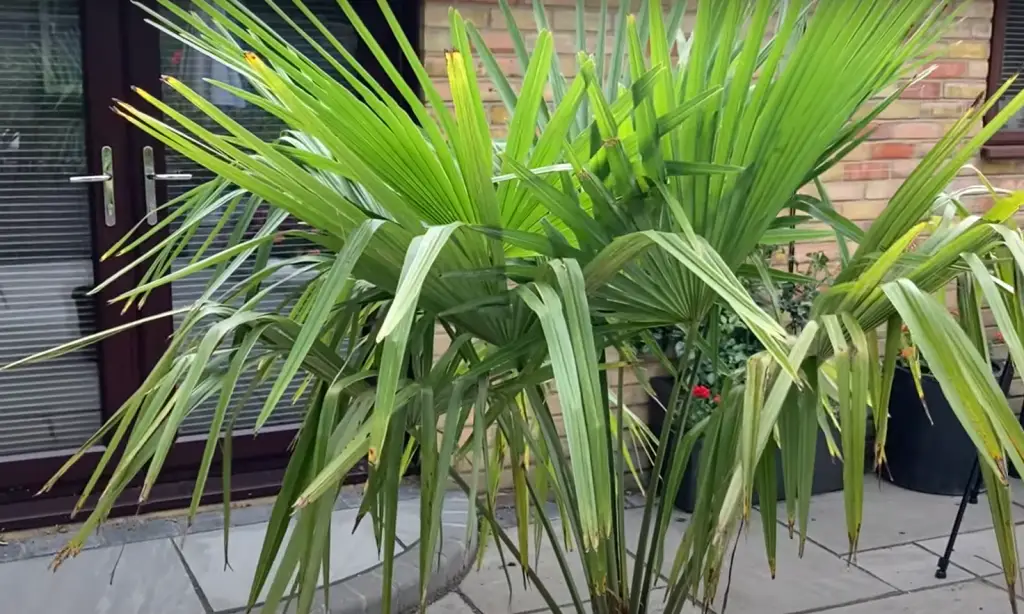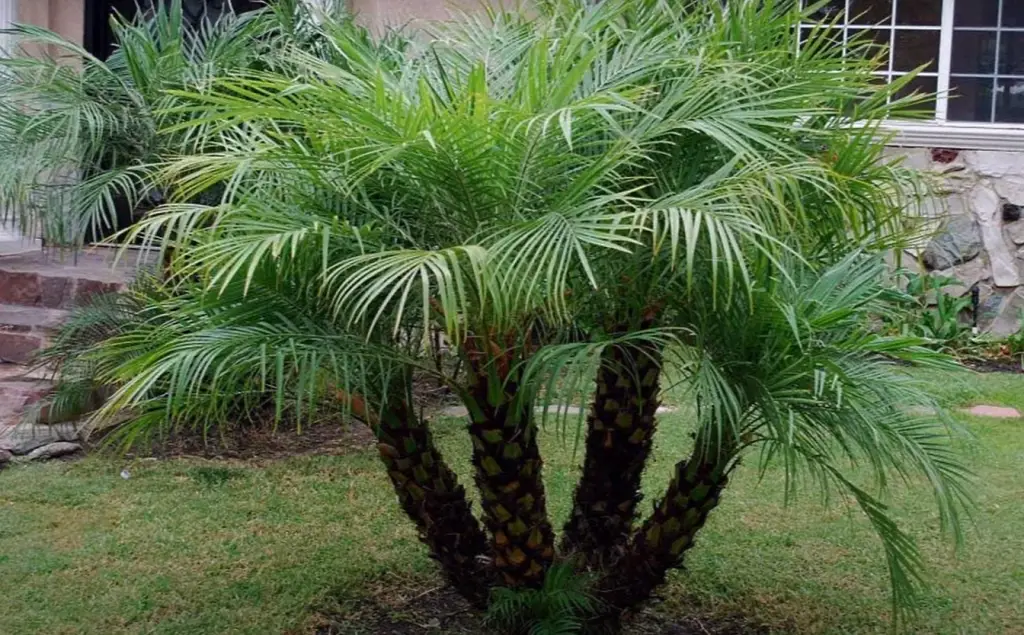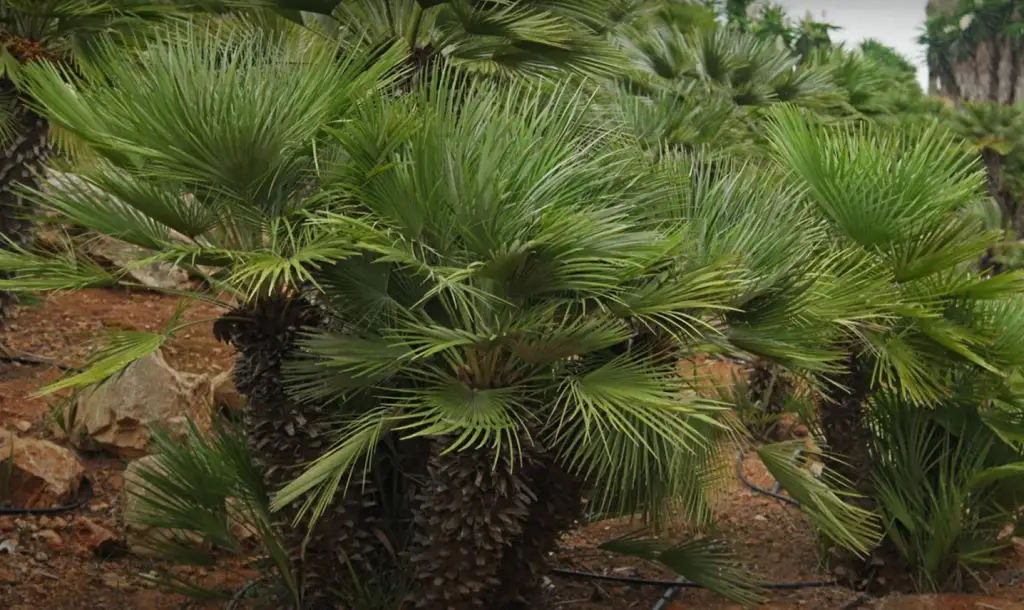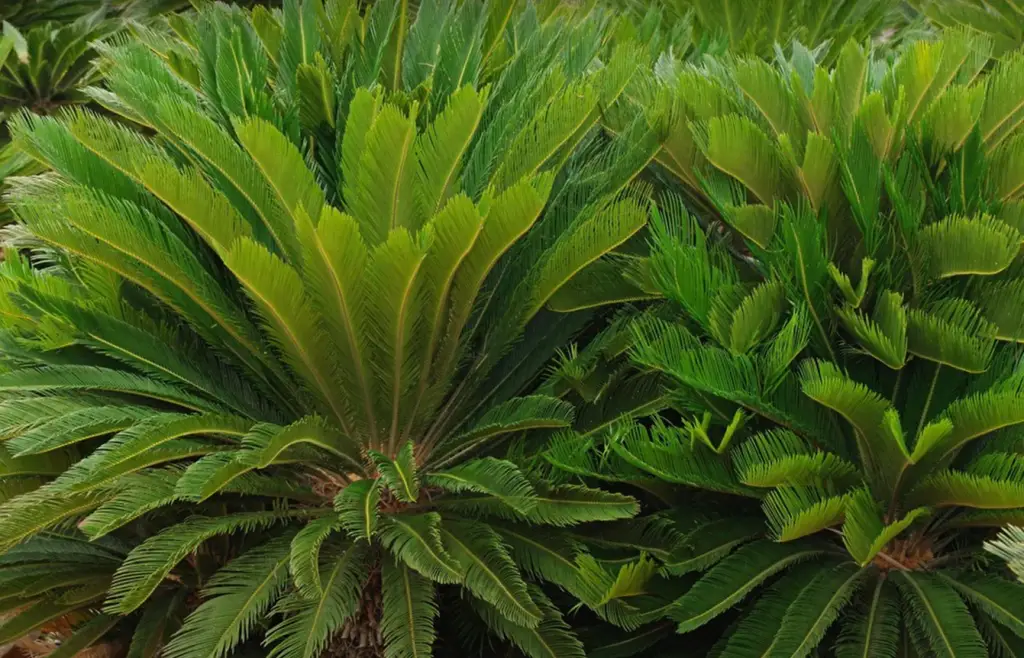Are you looking for a unique way to make your outdoor space look more inviting and luxurious? Consider the addition of one of nature’s most beautiful palms: the expensive palm tree. Not only can they add decorative charm to your garden, but their price tag adds an extra hint of opulence. While there are several types of pricey palms on the market, each species offers different advantages when it comes to cultivation and care as well as variety in prices. Read on to learn which type may be right for you!
What are the Main Characteristics of Palm Trees?
Palm trees are an iconic symbol of tropical climates and beaches, but they can also be found in more temperate climates around the world. Their unique characteristics make them a popular choice for landscaping and decoration in many parts of the world.

Palm trees are known for their unique and distinctive characteristics. These characteristics include:
- Fan-like fronds: Palm trees have fan-shaped fronds that can range from one to several feet in length, depending on the species of palm tree. The fronds are filled with small leaflets that help regulate the temperature of the tree and protect it from wind and rain damage.
- Single trunk: Unlike most other types of trees, palms have only a single trunk – generally slender and fibrous – which provides them structural support throughout their lives.
- Height: Palms can grow anywhere from 10 feet to over 100 feet high, depending on the variety.
- Longevity: Most varieties of palm trees can live for 40-100 years, depending on the species.[1]
- Fruit: Palm trees are known for their various edible fruits such as dates and coconuts.
- Uses: Palm trees have many uses from providing shade to making furniture, building materials and even medicines.
- Hardiness: Palm trees are known for their hardiness and ability to withstand a variety of environmental conditions. They can survive in both hot and cold climates, as well as areas with dry or wet soil.
- Adaptability: Palm trees have the ability to adapt to different climates and conditions, making them popular choices for landscaping projects around the world. [2]
How to Grow a Beautiful Chic Palm Tree?
Growing a chic palm tree can be a rewarding and enjoyable experience. With proper care, these trees will provide shade, privacy, and an incredible tropical look to your landscape. Here are some tips on how to grow and care for a chic palm tree:
- Choose the right location: When selecting a spot for your palm tree, look for a sunny area with well-drained soil that’s in close proximity to your home. Chic palms do best when planted near the south or east side of a building because they receive more sun during the day. Keep in mind that these palms require plenty of room for growth – ideally at least 10 feet from other plants or buildings.
- Planting: When planting your chic palm tree, dig your hole twice as wide and just a bit deeper than the root ball of the tree. Place the tree in the hole, making sure that it is level with the surrounding soil. Backfill with soil and tamp down lightly to remove air pockets. Water thoroughly after planting and add mulch around the base of the trunk to retain moisture. [3]
- Watering: Once established, chic palms prefer a deep watering about once or twice per month – depending on rainfall levels and temperature during summer months. If you’re unsure, check for signs of drought stress including yellowing leaves or wilting branches before deciding when to water your palm tree.
- Fertilizing: Chic palms will benefit from regular fertilization. Apply a balanced fertilizer with trace minerals (such as 10-10-10) in the spring and again in the fall. Follow package instructions for proper application rates.
- Pruning: Minimal pruning is needed to maintain a chic palm’s shape and size. If you need to remove any brown fronds or dead leaves, do so by cutting them off at their base – never pull them off! [4]
What is the Specialty of Growing Palm Trees?
Palm trees have long been a symbol of beauty, strength, and exoticism. They can make any backyard or patio look more luxurious and inviting. Because they are low-maintenance plants that can adapt to many climates, growing palm trees has become increasingly popular in recent years.

Here are some of the main benefits of growing palm trees:
- Long Lifespan – Most types of palm trees have lifespans of 10-50 years or even longer if properly cared for. This makes them ideal for landscaping projects as they will last for decades with minimal upkeep.
- Versatility – There are dozens of varieties available, from small to large palms, making it easy to find one that is suitable for your climate and conditions.
- Low Maintenance – Palms require minimal pruning, irrigation, and fertilization to thrive, which makes them ideal for busy homeowners who don’t have time for regular gardening maintenance.
- Beauty – They create a beautiful aesthetic with their lush fronds and unique shapes. Whether planted in the ground or indoors as houseplants, they enhance any outdoor or indoor space.
- Resilience – Many palm trees are drought tolerant and can withstand extreme temperatures without damage. This makes them perfect for both warm climates like Florida or California or cooler areas like Canada or Europe. [5]
How Fast Do Palm Trees Grow?
Palm trees are one of the fastest growing tree species in the world, growing up to five feet per year. Their growth rate is dependent on a variety of factors, including soil type, climate, and water availability. Younger palms can be expected to grow faster than mature individuals. Additionally, palm trees that receive sufficient sunlight and nutrients will typically grow more quickly than those planted in less hospitable environments.
The speed at which a particular palm tree grows may also depend on its species. While most palms are fast-growing varieties, some are slower growers that take several years before they reach their full height potential. Dwarf varieties of palms, such as the spindle palm, typically grow at a much slower pace than larger varieties.
When planted in ideal growing conditions, most palm trees are relatively low-maintenance and can reach their mature size within a few years. With regular maintenance, such as pruning and fertilization, they can continue to thrive for many decades. Proper care is essential for ensuring that your palm tree remains healthy and continues to grow quickly. [6]
Which Climate is Great for Palm Trees?
Palm trees are best suited to tropical climates, such as those found in the subtropical areas of the world. The ideal temperature for palm trees is between 65 and 95 degrees Fahrenheit. Areas with high humidity levels, such as coastal regions and rain forests, are also desirable habitats for palm trees. As long as temperatures remain consistently warm, palms will thrive wherever they are planted. In general, most varieties will survive temperatures dipping to 20-30°F for brief periods of time.
When selecting a climate zone for your palm trees it’s important to consider more than just the average temperatures. Pay attention to the amount of rainfall, humidity levels, and the intensity of cold spells in the winter. Many species of palm tree are drought tolerant and can survive extended periods without rain. However, they still need regular watering to help establish strong root systems during their first few years of growth. If you live in an area with warm summers and generally mild winters, your palms should have no problems surviving outside all year long. [7]

Overall, palm trees do best when planted in climates that offer a good balance of sun and shade, as well as consistent warmth throughout the year.
What Does A Palm Tree Cost On Average?
The cost of a palm tree depends on several factors, including species, size, location and type of seller. Generally speaking, small to medium-sized palms can cost anywhere from $50 to $500 or more depending on the species and size. For larger specimens like Canary Island Date Palms (Phoenix Canariensis) they can range up to thousands of dollars depending on their height and condition. If you are going for something rare or exotic the prices may be considerably higher.
On average, expect to pay between $200 -$500 for a high-quality specimen that is suitable for planting in your garden or landscape. Some online stores will also offer discounts when ordering multiple trees at once which can save you considerable money if you are looking to add multiple palm trees to your outdoor area.
Before making a purchase, it is important to research the best care and maintenance requirements for any particular species you’re considering so that you can ensure it will thrive in your climate and garden. With proper care and attention, even the pricier palms can last for decades! [8]
If you have any further questions about what a specific palm tree may cost, contact a local nursery or landscaping specialist who can offer more detailed advice tailored specifically to your needs. They should be able to provide accurate estimates on pricing as well as tips on how to keep your palms happy and healthy over time!
Top 15 The Most Expensive Palm Trees
Remember that the price may vary depending on the country of purchase, size, age, etc!
Phoenix Canariensis – Canary Island Date Palm
The price can be up to $800.

It is one of the most popular palm trees in the world, and it’s also one of the most expensive types. This tree has large fronds that can reach up to 20 feet and its trunk can grow up to 25 feet tall. It requires a lot of care due to its size and environment requirements, so it comes with a hefty price tag.
Washingtonia Robusta – Mexican Fan Palm
The price can be up to $600.
This is another very popular type of palm, native to Mexico but widely grown all over the world for its striking beauty. It typically grows up to 50 feet tall, and its leaves can reach up to 15 feet long. It’s a relatively low-maintenance tree but needs regular care due to its size.
Syagrus Romanzoffiana – Queen Palm
The price can be up to $700.
It is an impressive species of palm native to Brazil, though it grows in many places throughout the tropics and Mediterranean climates. This tree typically reaches between 20 and 30 feet tall with arching fronds that can reach up to 25 feet in length. Its trunk is usually smooth and grayish in color, which makes it stand out from other palms.
Archontophoenix Cunninghamiana – King Palm
The price can be up to $800.
This is native to Australia, and is one of the most popular palms for landscaping due to its large size. It can reach heights up to 40 feet tall with fronds that can be as long as 20 feet. The King Palm requires minimal care but does best in full sun.
Livistona Chinensis – Chinese Fan Palm
The price can be up to $700.
It is a type of fan palm native to China and other parts of Asia. This tree typically grows between 25 and 35 feet tall with deep green fan-shaped leaves that can reach up to 10 feet long. This is a low-maintenance palm that requires regular watering and pruning for optimal growth.
Sabal Palmetto – Cabbage Palm
The price can be up to $1000.
It typically grows up to 40 feet tall with large fan-shaped leaves reaching up to 8 feet in length. This tree requires minimal care and can handle light drought conditions without any issue.Trachycarpus Fortunei – Windmill Palm
The price can be up to $1500.

The Trachycarpus Fortunei is a type of fan palm native to China and other parts of Asia which can reach heights up to 50 feet tall with fronds reaching lengths of 20 feet or more. This tree has low maintenance requirements but needs protection from strong winds and cold temperatures.
Cocos Nucifera – Coconut Palm
The price can be up to $2000.
The Cocos Nucifera is a type of palm native to tropical regions throughout the world that’s known for its delicious coconuts. This tree reaches heights up to 100 feet tall with fronds reaching lengths of up to 20 feet or more. It requires minimal care and can thrive in hot and humid climates without any issue.
Chamaedorea Elegans – Parlor Palm
The price can be up to $3500.
The Chamaedorea Elegans is an impressive species of palm native to Mexico, often used in homes as houseplants due to its small size and low maintenance requirements. This tree typically grows up to 6 feet tall with fronds reaching lengths of 5 feet or more.
Rhapis Excelsa – Lady Palm
The price can be up to $4000.
The Rhapis Excelsa is a type of fan palm native to Japan and other parts of East Asia which can reach heights up to 10 feet tall with broad leaves that can reach lengths of up to 4 feet. It’s a low-maintenance tree but requires regular pruning for optimal growth.
Licuala Grandis – Ruffled Fan Palm
The price can be up to $5000.
The Licuala Grandis is an impressive species of palm native to Southeast Asia which reaches heights up to 20 feet with fronds reaching lengths up to 4 feet. This tree has low maintenance requirements and prefers humid environments with partial shade.
Arenga Engleri – Dwarf Sugar Palm
The price can be up to $7000.
The Arenga Engleri is a type of fan palm native to Southeast Asia which reaches heights up to 30 feet tall with leaves reaching lengths of 8 feet or more. It’s a slow-growing tree that requires minimal care but needs protection from strong winds and cold temperatures for optimal growth.
Elaeis Guineensis – African Oil Palm
The price can be up to $8000.
The Elaeis Guineensis is a species of palm native to Africa, often used in commercial applications due to its high oil content in the fruits and nuts. This tree typically grows up to 60 feet tall with fronds reaching lengths of up to 20 feet.
Latania Verschaffeltii – Blue Latan Palm
The price can be up to $10,000.
The Latania Verschaffeltii is an impressive species of palm native to Mauritius, often used as a decorative tree for its striking blue fronds. This tree typically reaches heights up to 40 feet tall with bright blue fan-shaped leaves that can reach lengths of 10 feet or more.
Bismarckia Nobilis – Bismarck Palm
The price can be up to $20,00.

The Bismarckia Nobilis is an impressive species of palm native to Madagascar, often used as an ornamental tree due to its large size and striking silver-blue fronds. This species typically grows up to 50 feet tall with fan-like leaves reaching lengths of up to 15 feet. It’s a low-maintenance palm that requires minimal care but does best in full sun.
FAQs
How much is a real palm tree?
It can vary greatly depending on the type of palm and size. Smaller palms that are typically used in landscaping can range from $20-$300, while larger varieties may cost anywhere up to several thousand dollars or more. It is also important to factor in delivery and installation costs when determining the total cost of your purchase.
What is the most popular type of palm tree?
The most popular type of palm tree is the coconut palm. This species is found in tropical regions around the world and produces coconuts, which are edible and have many uses.
Which palm grows the tallest?
Among the tallest species of palms are the California fan palm, Chinese windmill palm, and Canary Island Date Palm.
What is the rarest palm?
The rarest palm is the Hyophorbe lagenicaulis, also known as the Bottle Palm. This palm is native to Round Island in Mauritius and is critically endangered. It has a single stout trunk with up to 12 round leaflets. The fronds are palmate and can span up to 1 meter in diameter. The seedlings of this species only take root under ideal conditions, making them even more difficult to propagate and cultivate. Ultimately, this makes it one of the most sought-after palms for collectors and landscapers alike.
Useful Video: Windmill Palm 🌴 || The Most Expensive Plant I’ve Ever Bought!
The Bottom Line
When it comes to the exotic world of palm trees, there is much to be appreciated. From gardening tips and tricks for cultivating your own oasis at home to the most expensive plants to look out for, there is something here for everyone. Whether you are looking for a picturesque centerpiece in your outdoor garden or an exquisite statement piece inside your home, the noble art of palm tree cultivation will leave you truly satisfied. Get creative! Start conjuring up some gorgeous designs and let your imagination run wild with all the possibilities that this exotic plant life has to offer.
References:
- https://www.jardineriaon.com/en/characteristics-of-palm-trees.html
- https://kidadl.com/facts/characteristics-of-a-palm-tree-everything-you-need-to-know
- https://www.missionpalmtrees.com/how-do-palm-trees-grow.html
- https://www.mydomaine.com/indoor-palm-tree-4776574
- https://www.thespruce.com/fascinating-facts-about-palm-trees-2736717
- https://treejourney.com/full-palm-tree-timeline-how-long-they-take-to-grow/
- https://desertempirepalms.com/blog/what-weather-conditions-will-a-palm-survive/
- https://www.evergreenseeds.com/palm-tree-cost/










Leave a Reply
View Comments